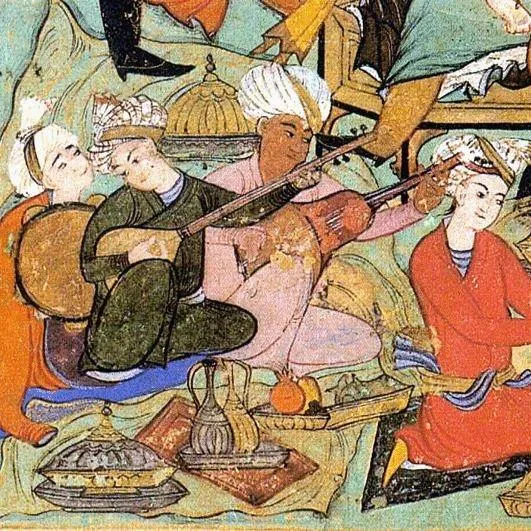
The musical legacy from the 9th to the 11th centuries has been studied by Muslim theoreticians of music al-Farabi, Ibn Sina, Muhammad al-Khorezmi, Fakhr al-Din Razi and others. Musical treatises of scientists from Ancient Greece were translated into Arabic, the information from them was used in their own works about music, and they influenced the development of the musical, theoretic and aesthetic philosophy of the East.
Up until Central Asia was conquered by the Arabs in the second half of the 8th century, the musical culture of the local people was developed in several fixed historical and cultural areas: Sogd, Bactria, Tokharistan, Khorezm, Ferghana, Chach and Ustrushana. Each area had its own unique aspects, while also at the same time preserving a unified regional type. These features were reflected in the instruments used, the forms of music, types of ensembles, musicians and other elements. It was influenced not only by the historical and cultural differences between the regions, which were often parts of different countries, but also the presence or absence of a single or dominant religion in the area. Here Zoroastrianism, Manichaeism, Buddhism, Christianity, Judaism and various local ancient cults often co-existed in a single territory. Each religion followed its own traditions and canons of how to use music. Visual materials can be interpreted differently, depending on which religion or cult they belong to.
One of them, for instance, is the Ayrtam frieze and its Buddhist symbols, numerous figurines of female musicians connected to the local female deity, and depictions of a ritual dance performed by priestesses.
In all historical and cultural regions, the tradition of secular music played at court and in the houses of nobility reached new heights. Music was an indispensable part of bazm (feasts), along with wine and dancing. The “Festive Scenes” on murals in the palaces of Balalyktepe, Afrasiab and Toprakkala, and on the ancient toreutics (dishes, chalices) and other artifacts confirm that music was consumed in order to derive pleasure.
You can learn more about the topic in the book-album "The Musical Legacy of Uzbekistan in Collections of the Russian Federation" (Volume VI) from the series "Cultural legacy of Uzbekistan in the world collections".
The general sponsor of the project is the oilfield services company Eriell-Group.
